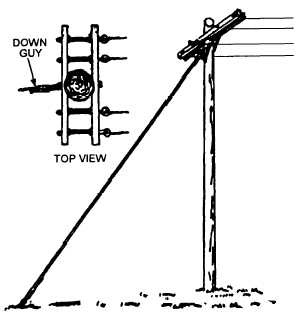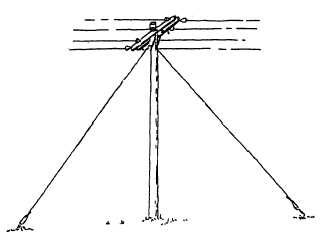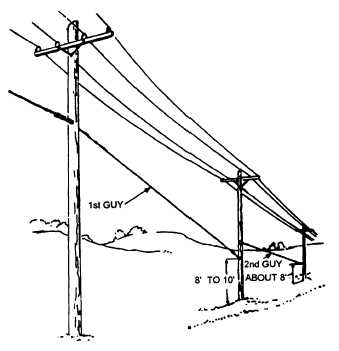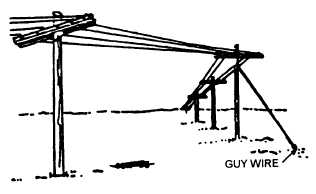Figure 2-9.—Terminal down guy.
Figure 2-11.—Line guy, or storm guy.
Figure 2-10.—Corner guy.
b. TERMINAL DOWN GUY. As shown in
figure 2-9, this type of guy is usually placed at the end
of a pole line to counterbalance the pull of the line
conductors. The terminal down guy can, at times, be
called a corner guy.
c. CORNER GUY. The corner guy (fig. 2-10)
is used where there is a directional change in the line.
d. LINE GUY. A line guy is installed in a
straight pole line where an unusual stress or strain comes
from farther down the pole line or where there is a
chance the conductors may break and cause excessive
damage. Many times, line guys are installed in pairs, as
shown in figure 2-11. A line guy is often called a storm
guy.
Figure 2-12.—Head guy.
2. HEAD GUY. A head guy runs from one pole to
the next pole down the line. It is used to transfer the load
supported by one line pole to another, as shown in figure
2-12.
3. PUSH BRACE. A push brace (fig. 2- 13) is used
where a pole cannot be guyed and is too small to be
self-sustaining. It is used in marshy or sandy soils where
anchors cannot be firmly embedded. The upper end of
the brace is bolted to the pole.
2-8









